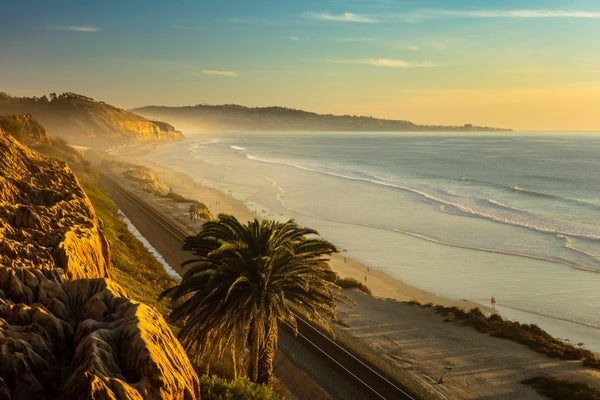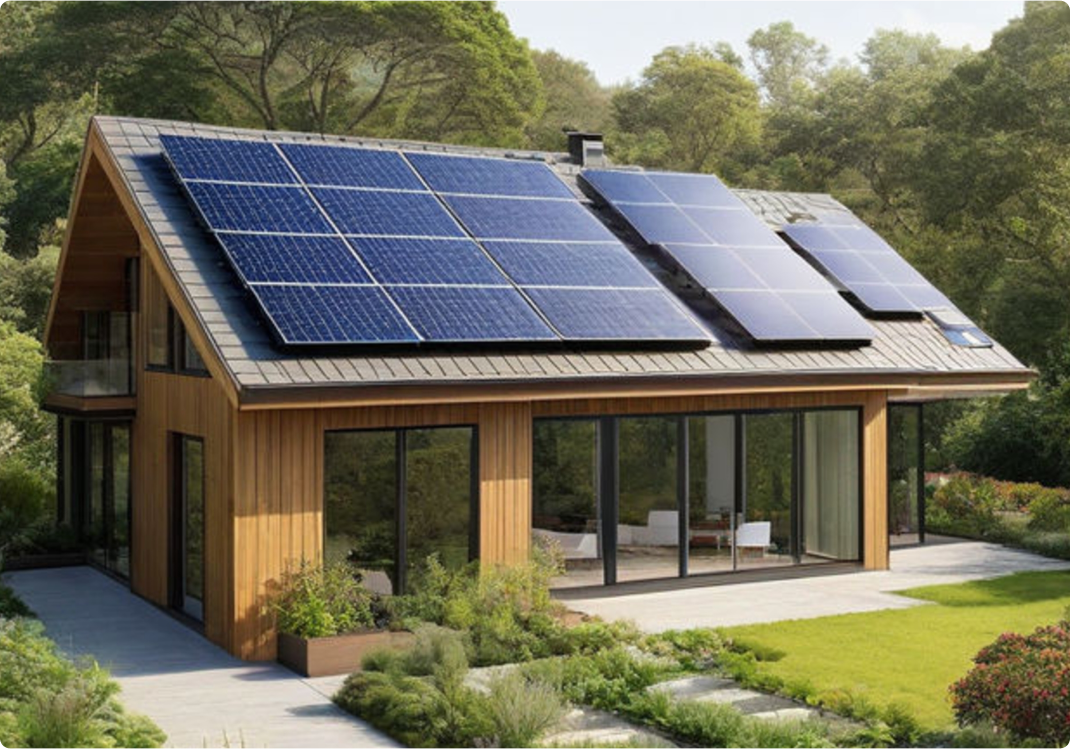Blog More and more people are making the decision to live in tiny homes. The tiny-house movement has drawn people from all walks of life to its downsizing ideology; with less than 400 square feet of floor area, a tiny home truly lives up to its moniker.
However, while living in a tiny home requires an ongoing simplification process, finding a place for building a tiny house is not a simple process. Residential zoning regulations usually dictate the square footage needed for new construction, and tiny homes often fall below the required minimum. This means that finding a place to put your tiny home can often be an arduous task.
Don’t fret just yet. Thankfully, some states have even relaxed their regulations in response to the advent of the tiny-house movement.
What States Allow Tiny Homes?
Planning and building a tiny house is easier in some states than others—mostly due to zoning regulations. Here are the six best states for tiny homes.
1. California

Whether you crave the sun and surf of San Diego, the glitz and glamour of Los Angeles, or the agricultural haven of Fresno, California is one of the best states that allow tiny homes.
In 2020, California implemented statewide accessory dwelling unit (ADU) laws that require counties and cities to create plans incentivizing ADU development. Governing bodies must approve or deny ADU proposals within two months of a permit application submittal. Further, cities are disallowed from requiring maximum ADU square footage, off-street parking, and minimum lot size. As you can imagine, this mandate vastly increased the state’s ADU friendliness and even led to the creation of multiple ADU startups such as Abodu, United Dwelling, and Villa.
While an ADU tiny home is one option, perhaps you would like a standalone tiny house building on its own lot. Although each county and city has localized regulations and zoning ordinances, the state’s tiny home standards are created by the California Department of Housing and Community Development. According to these guidelines, tiny homes built on foundations must either follow the International Residential Code and the California Building Standards Code or must be pre-approved for specific alternative projects. If your tiny home is classified as a recreational vehicle or park trailer, it will need to comply with different guidelines. Learn more about the state’s varying guidelines.
Best Places to Live in a Tiny House in California
If you’ve been fantasizing about an off-grid lifestyle, much of The Golden State’s majestic mountains, captivating coastline, and rugged forests should heed your call. If you’re interested in finding your tiny-home tribe, check out California’s robust tiny home communities, all of which provide budget-friendly living, like-minded neighbors, scenic views, and, perhaps best of all, already-conducted legal research.
- Tiny House Block in Cleveland National Forest: Park your tiny home or rent one of the property’s available tiny houses long-term on this beautiful location amid the pine trees. This spot is perfect for tiny-homeowners who love to be in nature: You’ll be within walking distance of various hiking trails. Bonus: The Pine House Café and Tavern is on-site for those times when you need a delicious meal that you didn’t have to cook.
- Lemon Cove Village: Situated near both Sequoia National Park and Kings Canyon National Park, Lemon Cove Village is the perfect place to set up tiny home camp for a few nights or up to a month. (This is only for tiny homes on wheels, as it is an RV camp.) You’ll have access to the Sequoia Shuttle during the summer, which takes you into the park for a day full of adventure. All guests can use the pool, dog park, community gathering center, showers, and laundry room. The Village really has it all.
- Delta Bay Tiny House Resort in Northern California: Situated at a midpoint between San Francisco, Stockton, and Sacramento, Delta Bay is an ideal spot if you want a slower pace of life with access to big cities. Its lovely location on the San Joaquin River means that you can wake up with a cup of coffee and gaze out at the water from your tiny home; what could be better? The property also has tennis courts, a volleyball court, and a clubhouse. While you can’t build a tiny home on the property, you can park your tiny home here short- or long-term, as Delta Bay’s “vision is to form a grassroots community of tiny houses.”
2. Texas

As the saying goes: “Everything is bigger in Texas.” Everything, that is, except for its burgeoning tiny-house movement. Texas is next on the list of the best tiny-house friendly states since many Texas counties do not enforce zoning regulations outside city limits. Rural county-incorporated areas generally have free rein for building tiny homes—yeehaw! You will still have to build your tiny home according to transportation standards, subdivision rules, water supply regulations, and local building codes and safety standards. This means you might still have to obtain a building permit.
If you are planning on moving to Texas and building a tiny house on a lot, it might be a good idea to consult a lawyer or real estate professional who is well-versed in the local zoning regulations.
Best Places to Live in a Tiny House in Texas
If you’d rather engage with tiny home communities, you have several great options:
- WatersEdge at Lake Conroe: This is a great community for building a tiny home because you can choose and purchase a model offered by WatersEdge, and it will be built on the property. Enjoy gorgeous lakeside views and family-friendly amenities, like weekly movie nights, sports facilities, a pool, a lakeside beach, and miniature golf. Plus, you’ll have a private dock and boat launch for many a day spent out on Lake Conroe.
- Lake Dallas Tiny Home Village: The “first tiny home village of its kind built inside a city limits,” the Lake Dallas Tiny Home Village accepts tiny houses on wheels and has a community garden and city-style living. It is located in the Downtown District. You and your tiny-house neighbors can enjoy nights spent around the backyard fire pit.
- Village Farm Austin: If you prefer to pair your tiny home lifestyle with your green thumb, Village Farm may be for you. It is an "agrihood" tiny home community adjacent to Green Gate Farms. According to its website, “Village Farm’s mission is for residents to have access to locally grown produce and take pride in sourcing and handling their own food.” Plus, it has a dog park on-site for your furry best friends.
3. Florida

Maybe you’re moving to Florida for its ample sunshine and proximity to gorgeous white-sand beaches. Or perhaps you’re a kid at heart and want to be within driving distance of a magical theme park. Before looking into the housing market, consider building a tiny home in The Sunshine State.
If you already own a home in Florida and want to build an ADU, you’re in luck. According to the Florida Housing Coalition, 11 cities in Florida, including Orlando, Tampa, and Tallahassee, “allow ADUs in single-family districts”—though restrictions vary on lot size, dwelling size, and more.
Many Florida counties have lax regulations for tiny home builds. The beautiful beachy counties of Sarasota and Petersburg and the more urban Orange County are notoriously tiny home-amenable, according to TinyHouse.com. Some counties and cities don’t even have a minimum square footage requirement for dwellings, which should make your tiny house building plans all the easier.
However, Florida still has some local zoning ordinances. Further, your tiny house might need to comply with Florida safety and building standards. As always, do your due diligence to ensure that a property allows tiny home builds.
Best Places to Live in a Tiny House in Florida
Here are a few of the best places to join a tiny home community in Florida:
- Orlando Lakefront Tiny Home Community: This is a great spot for those who want to park their mobile tiny home in a friendly area close to downtown Orlando, the University of Central Florida, and Disney World. You can rent one of the property’s tiny homes to get a taste for the lifestyle or bring your own tiny home on wheels and park it just steps from the lake. The community has a boat dock, fishing docks, and serene views of Lake Fairview.
- The Dwellings: The Dwellings is a nonprofit tiny home community in Tallahassee specifically aimed at providing sustainable, affordable housing (with tiny home models to allow for up to three people) for the financially disadvantaged. The property has training and education facilities, on-site support staff, and community gardens. The Dwellings looks “to ensure [their] residents continue to grow and maintain success.”
- Circle Pond Tiny Community: Located in Ruskin (about 30 minutes south of Tampa), Circle Pond Tiny Community is situated on five peaceful acres with waterfront access. Bring your tiny home on wheels to this pet-friendly community with a vegetable garden, beehives, and a fire pit.
4. Colorado

Colorado is an ideal setting for your tiny living lifestyle. Though it is a tiny-house-friendly state, Colorado has stricter regulations for tiny homes on wheels than the other states on this list. Most counties in The Centennial State do not allow full-time residential use for tiny homes on wheels; El Paso County, however, passed the state’s first zoning ordinance for tiny houses on wheels.
If you are planning on building a tiny house on land, it will need to abide by local zoning ordinances and building regulations and comply with Colorado safety standards. There is no statewide land-use plan, meaning that city and county governments make the rules for land use and zoning. County regulations will most likely apply in rural areas outside of city zoning.
Best Places to Live in a Tiny House in Colorado
Experience the tiny home lifestyle with other like-minded homeowners at these communities:
- Peak View Park: Located in Woodland Park, Peak View Park is the best spot for people who love the outdoors. This tiny home community is close to Pikes Peak and a plethora of hiking trails. You can either drive in your tiny home on wheels or purchase a cabin-style Park Model tiny home if you’d like to call Peak View Park home. Wake up to breathtaking views of the surrounding mountains, then head out into the wilderness for a day of adventure. Don’t worry: You’re still within driving distance of the amenities, food, and healthcare of Woodland Park.
- Escalante Village: Head to Durango to experience a tight-knit tiny home community with river and mountain access. From your tiny home, you’re only minutes from the Animas River path and 15 minutes from downtown Durango. You can either purchase and build your own tiny home to bring onto the property or rent one of Escalante Village’s tiny homes to experience the lifestyle and location. Amenities include rentable storage (sometimes tiny homes can’t hold everything), two garden beds per space, a community garden, and snow removal.
Colorado even hosts the Colorado Tiny House Festival, a communal event that espouses embracing a minimalistic mindset.
Another option if you have moved to Colorado and already bought a traditional home is to build an ADU on your property. ADU regulations vary by city. For example, Golden, Colorado Springs, and Denver generally allow these types of dwellings; just keep in mind that requirements vary.








